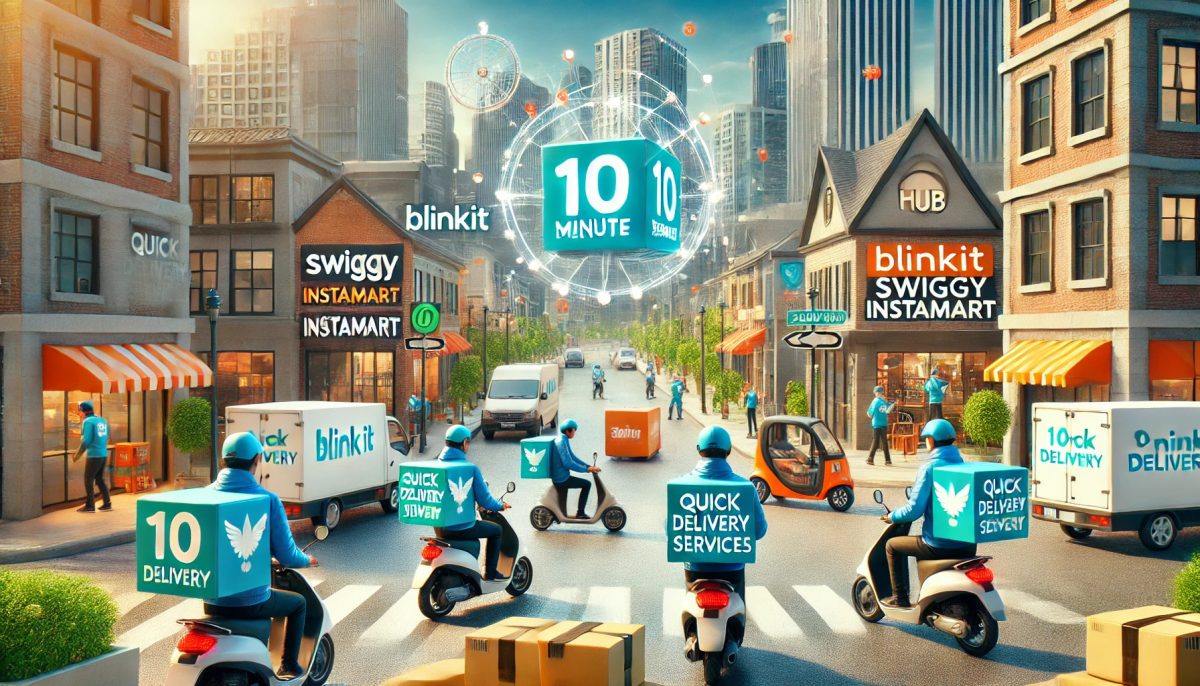The year 2024 has been transformative for the logistics and supply chain sector. One of the segments in the supply chain landscape which witnessed a significant boom was “quick commerce”. The spurt in the quick commerce industry was largely driven by the rising demand for “10-minute deliveries.” The trend, popularised by quick commerce platforms like BlinkIt, Swiggy Instamart, and Zepto, forced other quick commerce firms to join the bandwagon.
Rising demand for 10-minutes delivery
The demand for 10-minute deliveries witnessed a significant jump during 2024 due to several key factors:
Consumer expectations
Modern consumers, especially in urban areas, have become accustomed to instant gratification. The convenience of receiving products within 10 minutes aligns with their fast-paced lifestyles. Besides, there has also been a noticeable shift from value-seeking to convenience-driven purchasing behaviour. Consumers are willing to pay a premium for the convenience of rapid delivery, especially for daily essentials and groceries
Technological Advancements
Innovations in logistics, AI, and automation have made it possible for companies to offer ultra-fast delivery services. These technologies optimize delivery routes and streamline warehouse operations, enabling quicker turnaround times.
Urbanisation
Rapid urbanisation has increased population densities in cities, creating an ideal environment for establishing a network of small delivery hubs capable of fulfilling orders swiftly. Additionally, the widespread internet penetration and growing smartphone usage in Tier 3 and Tier 4 cities have significantly boosted the demand for quick delivery services.
2024 dominates fierce competition
The year witnessed an increase in number of new entrants in the 10-minutes delivery space driven by technological advancements and rising consumer expectations. Some of the new entrants in the space were
Ola Dash: Formerly known as Ola Cabs, Ola Consumer launched Ola Dash nationwide after capturing a significant market share in Bengaluru. Ola Dash aims to rival established players like Blinkit and Swiggy Instamart.
Magicpin’s magicNOW: Magicpin, already a strong player in the food and beverage sector, introduced magicNOW, leveraging its logistics arm, Velocity, to compete in the ultra-fast delivery segment.
Flipkart Minutes: E-commerce giant Flipkart entered the quick commerce space with its Minutes service, expanding its offerings beyond traditional e-commerce.
Amazon Tez: Amazon began testing its Tez service, aiming to tap into the growing demand for rapid delivery services.
Bigbasket Quick Commerce: Bigbasket pivoted to quick commerce, expanding its product range and delivery speed to meet consumer expectations.
The rising competition forced the existing players to expand its reach and strengthen its network across the country. Swiggy scaled up its 10 minutes food delivery offering, Bolt, to over 400 cities and towns across the country. Launched initially in Bangalore, Chennai, Hyderabad, New Delhi, Mumbai, and Pune, Bolt is now active not only in emerging hubs such as Jaipur, Lucknow, Ahmedabad, Indore, Coimbatore, and Kochi, but also in Tier 2 and 3 cities such as Roorkie, Guntur, Warangal, Patna, Jagtial, Solan, Nashik, Shillong amongst others.
When Apple launched its iPhone 16 series, BigBasket, Zepto and Blinkit jumped in the race to deliver the smartphones to the customers in just 10 minutes, challenging the traditional e-commerce giants Amazon and Flipkart.
Growing investor interest
The quick commerce market is projected to grow significantly, with a compound annual growth rate (CAGR) of 23.88 per cent between 2024 and 2029. According to Tracxn, there are nearly 34 quick commerce companies in India, almost three times more than those in the US. In the last 10 years, quick commerce startups in India garnered USD 6.53 billion in total funding, much closer to the number clocked by the US at USD 7.8 billion.
According to Tracxn, in 2024, Zepto raised a total of USD 690 million in Series G funding. On the other hand, Swiggy launched its IPO raising over Rs 11,300 crore and reaching a market capitalisation of around Rs 122,880 crore.
Impact on gig workers
The push for 10-minute deliveries has placed immense pressure on gig workers. Over 83 per cent of app-based drivers work more than 10 hours daily, leading to physical and mental strain. Unrealistic targets and the rush to meet delivery times have resulted in avoidable accidents and health issues. Women gig workers face additional challenges, including safety risks and erratic schedules, discouraging their participation.
he NHRC in India has highlighted the need for targeted efforts to address the challenges faced by gig workers. The implementation of laws like the Social Security Code 2020 is crucial to ensure their welfare1. While some states are making efforts to provide social security, more needs to be done to address health insurance, minimum wages, and stress-free working conditions.
Under scrutiny
In November this year, the Competition Commission of India (CCI) allegedly found that quick commerce majors Swiggy and Zomato have breached competition laws by favouring select restaurants. According to media reports, an antitrust investigation revealed that Zomato had secured exclusive agreements with specific restaurant partners by offering reduced commission rates. On the other hand, Swiggy reportedly promised business growth to certain restaurants if they chose to list solely on its platform.
These developments led to the ministry of consumer affairs, food and public distribution directing e-commerce and quick commerce platforms to adopt “Safety Pledge” to commemorate National Consumer Day, 2024 on December 24, 2024.
The Safety Pledge is a voluntary commitment by e-commerce platforms for detecting and preventing the sale of unsafe, spurious and non-conforming products, cooperating with statutory authorities responsible for product safety, raising consumer product safety awareness among sellers and empowering consumers on product safety.
Conclusion
The transformative journey of 2024 has underscored quick commerce as a driving force reshaping supply chain logistics and consumer expectations. With innovations propelling rapid deliveries and intense competition fuelling market expansion, the industry is poised for continued growth. Looking ahead in 2025, the competition in the quick commerce segment is likely to intensify. However, as platforms race to deliver in record time, the human cost on gig workers and the regulatory challenges would need urgent attention.

